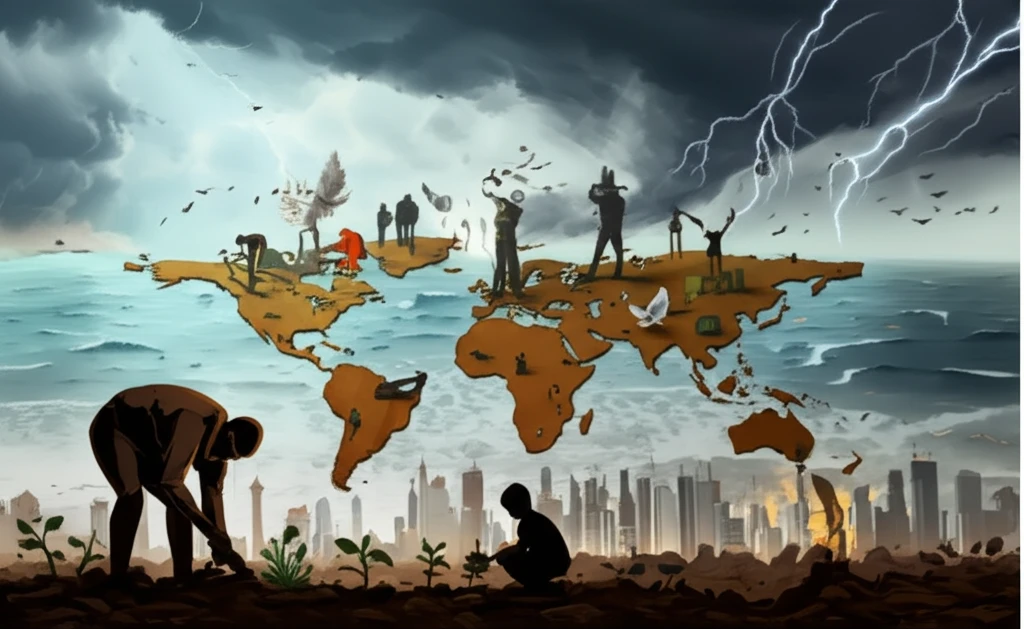
Can Climate Predict Conflict? How El Niño Impacts Global Stability
"New research reveals the surprising connection between climate patterns like El Niño and political violence, offering potential for early warnings and more effective peacemaking."
In an era defined by climate change and geopolitical instability, understanding the links between these global challenges has never been more critical. Recent research sheds light on a surprising connection: the influence of climate phenomena, specifically the El Niño Southern Oscillation (ENSO), on political violence. This connection could revolutionize how we approach conflict prevention and peacemaking efforts.
El Niño and its counterpart, La Niña, are characterized by fluctuations in sea surface temperatures in the tropical Pacific Ocean. These seemingly isolated oceanic events trigger a cascade of effects across the globe, altering weather patterns, impacting agricultural yields, and, according to new evidence, influencing the dynamics of political conflict. The implications of these findings are far-reaching, suggesting that climate data could serve as an early warning system for identifying and mitigating potential hotspots of violence.
This article explores the groundbreaking research uncovering the relationship between ENSO events and political instability, particularly in agrarian societies. By examining the mechanisms through which climate shocks affect conflict, and considering the potential for leveraging climate predictions to enhance peacemaking efforts, we gain valuable insights into navigating the complex challenges of our interconnected world.
The Climate-Conflict Connection: How ENSO Triggers Political Instability

The El Niño Southern Oscillation (ENSO) is a recurring climate pattern centered in the tropical Pacific Ocean. Its most recognizable feature is the fluctuation in sea surface temperatures, leading to El Niño (warmer temperatures) and La Niña (cooler temperatures) events. However, the impact of ENSO extends far beyond ocean temperatures, influencing weather systems worldwide through a phenomenon known as teleconnections.
- Reduced Harvests, Reduced Conflict: The research suggests that El Niño-induced weather adversity during crop-growing seasons decreases political violence shortly after harvest, potentially due to smaller surpluses of food or cash available for perpetrators.
- La Niña's Opposite Effect: Conversely, La Niña events, which bring cooler temperatures, can increase conflict in the same exposed croplands during the early postharvest season.
- Predictive Potential: Because ENSO events can be predicted several months in advance, these findings offer a platform for early warnings of changes in political violence, particularly in agrarian societies.
A Call to Action: Leveraging Climate Data for Conflict Prevention
The research presented here offers a compelling case for integrating climate data into conflict prediction and prevention strategies. By understanding how ENSO events influence political violence, policymakers and international organizations can proactively address potential hotspots of instability. Early warning systems based on climate predictions can enable targeted interventions, such as providing economic support to vulnerable communities, mediating disputes, and strengthening local governance structures.
